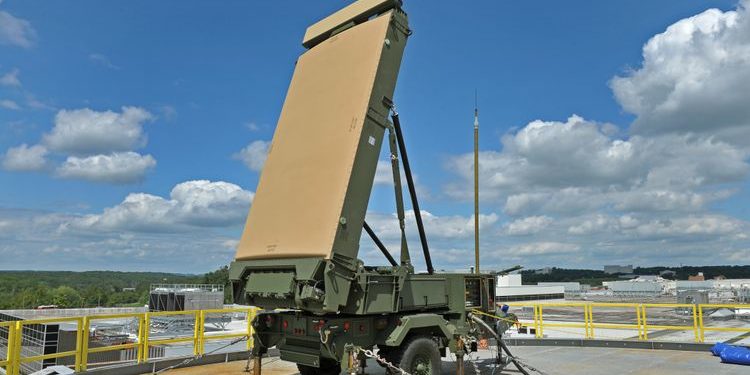Quick Facts
| Role and Mobility | Short- to Medium-Range Multi-Mission Radar; Highly Mobile |
| Frequency | X-Band |
| Range | Short- to Medium-Range |
| Air Defense Interceptor Systems | Fim-92 Stinger |
| Targets | Aircraft, UAVs, Cruise Missiles, Rockets, Artillery, and Mortars |
| Status/Exports | Operational; N/A |
| Producer | Northrop Grumman |
Overview
The AN/TPS-80 Ground/Air Task Oriented Radar (G/ATOR) is a next generation air surveillance/air defense and Air Traffic Control (ATC) radar designed to function as a multi-mission radar. The G/ATOR is intended to place five legacy radars into one single solution; its air defense capabilities will replace the TPS-63 and MPQ-62 air defense radars, it will have counter-fire target acquisition capabilities to replace the TPQ-64, target tracking capabilities to replace the UPS-3 and air-traffic control capabilities in place of the TPS-73 radar.[i]The 3D X-band radar has been developed in three blocks, with the first block providing its capabilities for air defense and air surveillance and is capable of detecting incoming targets such as manned and unmanned aircraft, cruise missiles, rockets, artillery and mortars.[ii]Block 2 of the G/ATOR adds the ground counter-battery/fire control capability.[iii]
The radar system is comprised of three subsystems: Radar Equipment Group (REG), Communications Equipment Group (CEG) and Power Equipment Group (PEG). The REG is an integrated radar and trailer combination towed behind a Medium Tactical Vehicle Replacement (MTVR). The CEG is a communications and radar control systems transported in the armored M1152A1 High Mobility Multipurpose Wheeled Vehicle. The PEG is a pallet assembly contained tactical generator, cables and ancillary equipment transported on the bed of the MTVR.[iv]
The G/ATOR is the first production ground-based, multi-mission active electronically scanned array (AESA) radar that incorporates advanced gallium nitride (GaN) technology. The radar is integrated with advanced high-power and high-efficiency GaN antenna technology that improves its operational capabilities.[v]The first six G/ATOR systems incorporated the standard gallium arsenide (GaA) technology; the seventh system and all subsequent systems produced will incorporate GaN antennas.[vi]
Strategic Implications
The G/ATOR provides the US Marine Corp with a single multi-mission radar capable of performing the tasks of five legacy radars. This reduces the operation and maintenance costs as well as ensuring a modern capability. The system is highly mobile and highly transportable by a variety of vehicles. It can also augment sea-based air defense sensors and C2 capabilities while providing naval and joint forces with an expeditionary radar and cruise missile detection capability that extends landward battlespace coverage.[vii]Incorporating GaN technology makes the radar more efficient and advanced than other radars.
Timeline
September 2018: Initial Operating Capacity (IOC) of Block 2.
July 2018: US Marine Corp received the first delivery of a GaN-integrated G/ATOR system.[viii]
May 2018: Operational Assessment of Block 2.
February 2018: IOC of G/ATOR Block 1 .
October 2017: Operational Assessment of Block 1.
Recent News
References
[i]https://www.janes.com/article/82186/usmc-takes-delivery-of-first-gan-g-ator
[ii]https://www.candp.marines.mil/Programs/Focus-Area-4-Modernization-Technology/Part-7-Force-Protection/G-ATOR/
[iii]http://www.dote.osd.mil/pub/reports/fy2013/pdf/navy/2013gator.pdf
[iv]https://www.candp.marines.mil/Programs/Focus-Area-4-Modernization-Technology/Part-7-Force-Protection/G-ATOR/
[v]https://www.naval-technology.com/news/usmc-receives-delivery-first-gan-integrated-tps-80-g-ator/
[vi]https://www.janes.com/article/82186/usmc-takes-delivery-of-first-gan-g-ator
[vii]https://www.candp.marines.mil/Programs/Focus-Area-4-Modernization-Technology/Part-7-Force-Protection/G-ATOR/
[viii]https://www.naval-technology.com/news/usmc-receives-delivery-first-gan-integrated-tps-80-g-ator/

